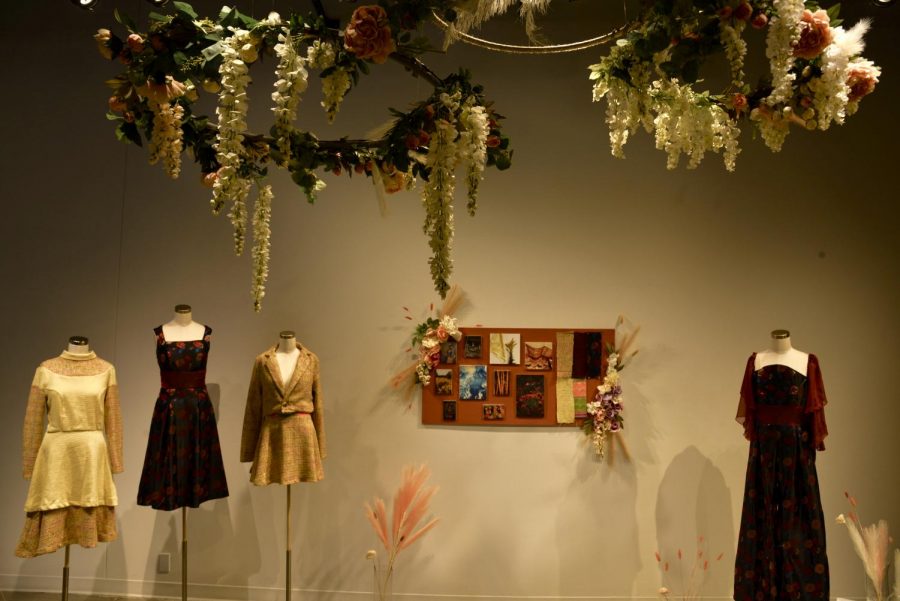Sustainability, technological advancements and, most importantly, comfort — University of Minnesota students are showcasing their best fashion prototypes as part of a new exhibit.
The exhibit, called Breaking Silence: Design in a Changing World, features the work of 12 designers from the University’s Apparel Design Program and will be on display until March 26 at the Katherine E. Nash Gallery located in the Regis Center for Art.
Before the COVID-19 pandemic began, Jahanvi Kamra’s original designs for her collection were made of non-stretchy fabrics, but she switched to knit to make the pieces more comfortable.
“More and more people started valuing comfort,” Kamra said. “Almost just as much or more than they value fashion.”
Kamra took comfort one step further by including a variety of adjustable features for height or modesty preferences.
The collection, inspired by streetwear clothing, is designed for those who want a “capsule wardrobe” or those that don’t want to buy a different outfit for every occasion. The pieces are easy to mix and match and dress up or down, she said.
Wendy Sandoval’s collection was also based around comfort. Her loungewear pieces are made of 100% cotton and hand-dyed knit in hues of orange, tan, green and pink.
Her collection is inspired by minimalism and the increasing pressure on the fashion industry to become more sustainable.
“We need to move away from a linear economy,” Sandoval said, suggesting we move to a circular economy, where products are repaired or recycled, rather than thrown away.
Lauren Nicol’s minimal yet luxurious collection features a neutral color palette of beige, tan and blush to create a “classic, timeless vibe.”
The pieces are menswear-inspired tailored blazers and trousers with feminine lingerie silhouettes, Nicol said.
Noah Garon’s collection features evening gowns and a jacket equipped with electronic parts for aesthetic purposes along with medical and safety functions.
One gown uses neuro-linguistic programming and hypnotherapy to help those with social anxiety disorders or stage fright. Another gown has a remote hidden under the skirt that controls the lights on the accompanying clutch.
Not only is this a cool party trick, but it can also serve as communication between the wearer and their friends or partner, indicating medical needs.
The jacket has a distance detector that makes the light and motor on the sleeve cuff vibrate and shine to alert the wearer that someone is getting close to them.
Another gown features a flower that rotates at four different speeds — low, medium, high or at the wearer’s heart rate.
The collection emphasizes the need for more “adaptive clothing” or clothing for people with disabilities. Garon said the pieces are meant to be functional but not to highlight the wearer’s disability.
“That way, those with a disability don’t feel ostracized by the community,” Garon said.
The gallery is closed to the public but University faculty, staff and students can view the exhibit by making an appointment online. The exhibit is open Tuesday, Wednesday and Friday from 11 a.m. to 5 p.m.








